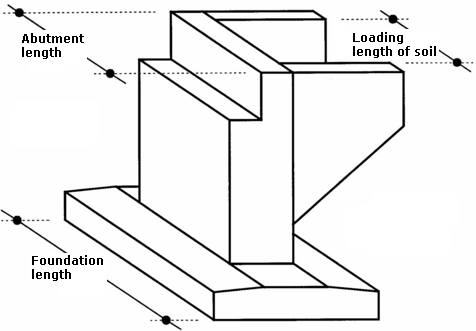The Volatility Foundation is an independent 501(c) (3) non-profit organization that maintains and promotes open source memory forensics with The Volatility Framework. Releases The Volatility Framework is open source and written in Python. FOUNDATION is America's #1 Construction Accounting Software® for job cost accounting, project management and mobile. See an online product tour! Sales: (800) 246-0800 Support: (800) 811-5926 HOME CLIENTS COVID-19. To access a full version of SoFA please fill in the following registration form: We will not disclose your personal data to any third party. You will be asked to submit details such as a personal email. Addition, the foundation recommendations are subject to change, depending on the results of the structural analysis and modeling and the effect that modeling and analysis has on foundation types, locations, sizes, and depths, as well as any design assumptions made by the geotechnical designer. Preliminary foundation recommendations may. FOUNDATION is America's #1 Construction Accounting Software® for job cost accounting, project management and mobile. See an online product tour! Sales: (800) 246-0800 Support: (800) 811-5926 HOME CLIENTS COVID-19.
Case Study
Share this article
Design and analysis of above-ground full containment LNG storage tanks
Development of the world's largest above ground LNG tank
Static, dynamic, thermal and nonlinear analysis
Strict design requirements met
KOGAS Gas Technology Corporation (KOGAS-Tech) is using LUSAS Civil & Structural software to help develop and continually improve its range of above ground full containment Liquified Natural Gas tanks. With the assistance of LUSAS engineering consultancy services LNG storage tank sizes of 140,000m3 were initially developed but now, using LUSAS Civil & Structural, an above ground full containment LNG tank with a capacity of 200,000m3 has been analysed and optimised. When completed it became the largest above ground full containment LNG storage tank in the world.
Tank development
Over the years KOGAS-Tech has developed two distinct types of above-ground post-tensioned concrete containment tanks. One involves the use of a proprietary inner membrane system, and the other comprises a steel nickel inner tank lining. Both are of a 140,000m3 capacity and have been installed at the Pyeongtaek and Tongyeong facilities in South Korea. With the use of LUSAS software KOGAS-Tech has now developed a 200,000m3 above ground tank for the Pyeongtaek facility. Similar in nature to its smaller brother it has a 37.6m high nickel steel inner tank of 84m diameter insulated from a 86.4m inside diameter post-tensioned concrete wall. The steel tank sits on a concrete base slab supported by small diameter piles at close centres. The overall tank height to the top of the roof slab is 52.8m.
Analyses undertaken In analysing and developing its range of tanks KOGAS-Tech performs numerous finite element analyses with LUSAS including:
|
Static analysis
For static analysis, 2D axisymmetric solid element and 3D shell element models are built and numerous static linear analysis loadcases are defined for various parts of the structure with the roof, the walls, the base slab etc being loaded independently. Load combinations then allow the effects of the multiple loadcases to be assessed.
Modal analysis
3D shell element modelling and eigenvalue analysis of the LNG tank outer shells and pressure relief platforms involves an examination of both the uncoupled and coupled response of the two structures. Lumped mass modelling is used for fluid/structure interaction of the LNG and for soil/structure interaction of the pile arrangements.

Wind load modelling 3D shell element modelling is used to carry out wind load analysis of the LNG tank outer shell. For this analysis, half-models can often be used due symmetry of both tank geometry and loading. The wind load is varied around the circumference of the outer walls using a Fourier distribution providing a normal pressure on the forward face of the structure and a suction to the rear face. | Seismic analysis Interactive Modal Dynamics techniques are used in the calculation of the dynamic seismic response. Operational Basis Earthquake (OBE) and Safe Shutdown Earthquake analysis assessments are also run to satisfy code requirements. The generated data from the structural analysis is integrated to obtain base shear forces and bending moments in the wall. Essays.com. |
Full Versionsofashallow Foundation Analysis Software Reviews
Thermal modelling

For thermal modelling, 2D axisymmetric solid field and continuum elements are used and a semi-coupled steady state thermal analyses of LNG tank outer walls with insulation is performed. For this, an initial stress-free temperature is applied to all elements, and combinations of environmental conditions are considered for both the air and base temperatures. Results plots of hoop stresses in the top and bottom corners caused by a steady state thermal load are produced.
| Top corner modelling |
| Bottom corner modelling |
Full Versionsofashallow Foundation Analysis Software 2017
Results plots of hoop stresses in the top and bottom corners caused by a steady state thermal load are produced.
Leakage modelling Leakage modelling analysis investigates the effect of LNG spillage from the inner steel tank onto the Polyurethane Foam (PUF) insulation on the inside of the outer concrete tank at five different heights. The tank insulation is assumed to have been completely destroyed up to each level of the LNG under consideration. 2D axisymmetric solid field and continuum elements are used to model the tank outer walls and insulation down to the top of each leakage level. A semi-coupled steady state thermal analysis is carried out to assess the effects of the leakage. |
Modelling prestress tensioning Large temporary openings in the wall mean that it is necessary to limit the effects of stress concentration caused by prestress forces. Loadings for each set of cables, both horizontally and vertically, are defined and assigned in separate load cases. These loadings can then be combined in different ways to achieve the required prestress sequence and/or loading pattern. Section slicing of the model is used to obtain axial forces and bending moments in the walls around the opening for selected load combinations. |
Burn-out modelling
Modelling of a burn-out scenario involves 2D axisymmetric solid field elements and transient thermal analyses of the LNG tank outer walls. The tank roof and insulation layers (except any PUF layer), are assumed to have been destroyed, and are not included in the analysis. Steady state conditions are initially applied for a specified time. To model the burn-out situation, a temperature load of a specified peak temperature reducing to -170°C over a distance of 1.5m is moved down the inside of the tank at a constant speed for the burn-out time under consideration.

Relief valve heat flux modelling With relief valve heat flux modelling, the tank bases are normally excluded from an analysis because they are considered to be remote from the heat flux loading. 3D solid field and continuum elements are used for a semi-coupled transient thermal analyses of a segment of an LNG tank. An initial stress-free temperature is applied to all elements and steady state conditions are established for an internal temperature of –170°C and a specified mean annual external temperature. A heat flux is then be applied to a specified region on the top of the roof for the number of time steps under consideration. |
'Using LUSAS allows us to continuously improve our analysis, research and development capability especially in nonlinear analysis. With LUSAS we can ensure that our range of LNG tank designs always meets the strict design requirements of our clients.'
Hag-Goo Sung, Civil & Arch Dept Manager, KOGAS-Tech
Share this article
Full Versionsofashallow Foundation Analysis Software Free
Other LUSAS Civil & Structural case studies:

